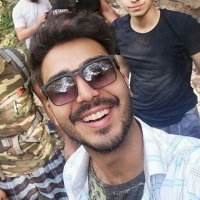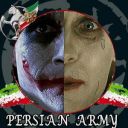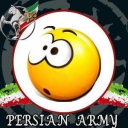![]() გამოქვეყნების ადგილი Iran - სოციალური ურთიერთქმედებები და გართობა - 08 Jun 2016 12:54 - 40
გამოქვეყნების ადგილი Iran - სოციალური ურთიერთქმედებები და გართობა - 08 Jun 2016 12:54 - 40

Tehran, Iran – a city that conjures up so many images in the minds of different people. Many in the West think of Tehran as the epicenter of all that is base and troublesome in the Middle East. Others see it as the city that will be a springboard for political activism and reform in modern Iran. Politics aside, Tehran is an enigma for many including those who actually live there. What is certain is that anyone who really wants to understand what modern Iran is about must at least spend some time in Tehran to get a glimpse of where the country has been as well as where it’s heading.
Brief History of Tehran
In a sense, Iran’s capital city of Tehran doesn’t really have a long history. What was once barely a village 150 years ago has transformed into a sprawling and, relatively speaking, cosmopolitan metropolis somewhere in the neighborhood of 15 million people.The early history of Tehran is tied to the ancient city of Rey (a.k.a. Ray), now ironically a suburb of the capital and believed to be the oldest settlement in today’s Tehran province. In fact, Rey is a historically significant city as many ancient Persian and Zoroastrian myths and legends took place within it’s vicinity (it is mentioned in Avesta texts and perhaps even in old Achaemenian archives as a Median city which the Romans later called Rhaga). 1 Even after the Arab conquest, Rey was still an important center of Persian culture and learning until it was all but obliterated by the Mongols in the 13th century. As Rey declined in lation and importance, Tehran began to take off as a little more than a trading village.

Tehran’s Qazvin Gate
What was then the village of Tehran came to prominence in 1795 when Mohammad Khan Qajar of Iran’s newly formed Qajar Dynasty made it his capital due to its mild weather and close location to Iran’s Caucasus possessions of Georgia, Azerbaijan, parts of Armenia and Dagestan. Let’s not also forget that the spectacular view of the towering Alborz Mountains of northern Iran could also have played a part in his decision to make this backwater village the capital of his empire. Tehran however lacked any sort of infrastructure or even semblance of the capital city of a powerful nation and thus in 1867, the extravagant Qajar monarch Shah Ner al-Din went on a building spree and hired a French military officer and amateur urban planner to tear down Tehran’s old city walls and build broad new boulevards like those of Paris. Ner al-Din’s goal was to make Tehran a city as great as St. Petersburg or Vienna.
In the mid 19th century, the city’s lation was just under 100,000 souls; by 1920 it had grown to around 200,000 citizens. Today the city is believed to have at least 15 million people, meaning that roughly one in every six Iranians lives within the greater Tehran metropolitan area. Such rapid urbanization has also completely transformed the landscape of this once pristine village. Replacing the 50 or so royal horse-drawn carriages of yesterday are an estimated three million pollution-pumping cars. 2 With all of the smog that this has created, one would be lucky to catch a glimpse of the Alborz Mountains now.
Tehran Today
Tehran is a dynamic city like any other major metropolis in the world. There are many parts of Tehran, especially in the north, that are on par with the great western urban centers in terms of modernity and culture. one can find many posh restaurants and chic cafes throughout the city and many American-style shopping malls carrying the latest (sometimes illegally imported) goods and electronics from all over the world. In fact if you just stay in the northern suburbs of Tehran, you may think that you’re in parts of Switzerland or Austria, the only real difference being fewer blondes and all of the women wearing some sort of head covering.
Tehran though is a great place for anyone to learn about modern Iran and the challenges that the country and people face. In this author’s opinion, the extremely friendly and hospitable people are the city’s main attraction. Aside from that though, many of the following things to see and do are also worth the visit to Iran’s capital.
Things to See and Do in Tehran, Iran
Azadi Tower

Most of the postcards that you’ll see of Tehran will contain the Azadi, or “fre” Tower on them. Standing at 45 meters tall, the Azadi structure was actually built in 1971 and commissioned by the country’s last monarch Mohammad Reza Shah Pahlavi to commemorate 2500 years of monarchy in Iran. The structure has an interesting blend of motifs and designs from pre-Islamic Achaemenian and Sanian eras as well as the Islamic Timurid and Seljuk periods. At one time there were two small museums at the base of the monument but these at time of writing were closed. You can walk to the monument from the Azadi street bus terminal but be careful! In order to do so, you’ll have to cross six lanes of Tehran traffic which is some of the most anarchic in the world.

The Palaces of TehranAs a royal capital for nearly two centuries, Tehran obviously has palaces that once housed their monarchs, both Qajar and Pahlavi. Though beautiful beyond belief, they are also reminders of the opulence and excess and well, the totally different world that these sovereigns occupied in comparison with most Iranians, both back then and today. These places though are probably the highlight of any trip to Tehran.
 Ivan-e Takht-e Marmar
Ivan-e Takht-e MarmarBuilt during the Qajar dynasty’s rule when they moved the capital to Tehran, what today has become known as Golestan Palace really is a mive complex made up of a series of buildings, many of which are today separate museums (meaning that you’ll have to pay admission separately for each one). Originally a Safavid citadel and then the Tehran residence of another one of Iran’s kings, Karim Khan Zand, the current palace was commissioned by Ner al-Din Shah in the late 1800s and called “Golestan,” meaning rose garden. The palatial complex was expanded several times to build more lavish audience halls and extended personal chambers for members of the royal family. However during the Pahlavi Dynasty that followed the Qajars, several of the original buildings were torn down to make room for the new Ministry of Finance, the Ministry of Roads and the offices of Iran’s national bank.

Hall of Mirrors, Golestan Palace – Tehran, iran
One of the main parts of the palace that you’ll probably venture into is the Ivan-e Takht-e Marmar, which is a large mirrored and marble audience hall with a grand throne. Built by the Qajar King Fath Ali Shah, the throne is supported by several carved figures and made of alabaster that was mined in and around the region of Yazd, Iran. This particular hall was used for lavish royal occasions including the coronation of Reza Shah Pahlavi in 1925.
One of the great feuds of Iranian royal politics was between the Qajars and the Zands, the dynasty which preceded them. When the Qajars came to Tehran and chose the grounds that became Golestan palace to become their home, there was already a residence which had belonged to the late Karim Khan Zand on the site. The Qajar monarchs tore down what was left of the Zand structure and brought the bones of deceased Karim Khan Zand from the city of Shiraz to the new palatial complex for burial. This was not done out of any reverence or respect for Karim Khan but was rather meant as an insult; over the newly-placed remains of Karim Khan, Qajar Shah Agha Mohammad built a throughway for all who entered the palace to walk over his hated (and dead) rival. All that is left of Karim’s home is the Khalvat-i Karim Khani, or “Karim’s corner” where Ner al-Din Shah used to laze around and smoke.
Other parts of the Golestan complex worth seeing are the Versailles-inspired Hall of Mirrors and several of the art galleries with both Persian and European-style paintings.
These of course are just the highlights. There is plenty more to see at Golestan Palace and so it’s probably best to dedicate at least 3-4 hours here, if not more.
Sa’dabad Palace

White Palace

Known commonly as the White Palace, this building was the summer home of the last two Pahlavi kings and their families. There once was a large bronze statue of Reza Shah in front which was torn down during the country’s Islamic revolution in the late 70s, but the 54 rooms that make up the palace remain largely intact. Many of these rooms still include priceless works of art from the Shah’s personal collection. In the Ceremony Hall is a 143-square-meter carpet believed to be the largest ever woven in Iran. In the basement of the palace is the Nation’s Art Museum.
Shahvand (Green) Palace
Shahvand Palace, a.k.a. the Green Palace due to the greenish marble interior of parts of the building, is another one of Saadabad’s grand structures. The palace was actually built by the Qajars but later remodeled by the Pahlavis into what it is now. The palace features wall-to-wall mirrors which after leaving you in awe may cause vertigo if you keep turning around to view them. I’m kidding (not really).
As mentioned earlier, many of the 18 or so buildings have been converted into museums that include the Museum of Fine Arts, the Royal Automobile Museum (Shahs love their cars), the Military Museum and the Royal Dishware Museum. Yes, this is a museum dedicated to showing the public the opulent objects on which the Shah and his family used to eat on.
As mentioned earlier, there is a lot to do here so make sure that you allow at least half a day if not a full one to really get a feel for this majestic marvel.

მხარდაჭერა
Loving Pabl0BoraxYasharCunaguaroკომენტარები (40)

nice Teheran

@nagant895 Yes, Tehran is beautiful

Very Nice, Bravo !!!

@Srdjan M thanks 

v

u could find better places to show...

@erfan094 You right say. In the next article I will show other places

@Lupul Alb o7

nice v o7

@idassa o7

Can I drink alcohol there?

Iran is one beautiful piece of land o7

@Mengrelian it s a regular city...you can do anything you want! @orkan you gotta come and see the nature of the northern regions! they are mind-blowing!

@amethyst77 Great! I may visit Iran near future^^

@orkan o7

Hail persia o7

@Descartes Hail France o7

VoTe

Like

voted, Tehran is a very fascinating city, i hope to visit one day.

@Mengrelian You gotta do it! Iran has some of the most beautiful sites ever!

V .

really ancient and modern at the same time. beutiful !

V I love my country.

iran is piece of shit 

Great article

s139 v62 Good article!

o/

o7












